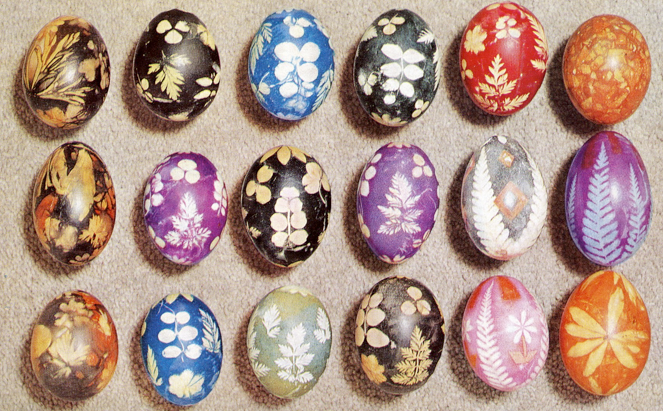Easter Eggs Stenciled With Herbs
Using herbs and plants as stencils, you can dye Easter eggs with beautiful botanical patterns. Here's our step-by-step guide.

Using herbs and plants to create patterns when dying Easter eggs is an old tradition, one seen in England with Pace eggs and in the Ukraine with lystovka. In the past, some people lightly glued the leaves and petals to the egg with a paste of flour and water, while others bound the material to the egg tightly with cotton fabric.
In our updated version of this craft, we use pantyhose, herbs, and a drug store dye kit to create these plant-stencilled Easter eggs.

Once you've gathered your materials, mix the dye as instructed (our kit called for the addition of a tablespoon of vinegar for bright colors), and either hard boil or blow out your eggs in preparation. (I got our egg blowing kit from HearthSong.)
(And here are 64 egg recipes from SAVEUR.)

Prep the eggs for dying:
1. Cut a length of pantyhose that's slightly longer than the egg and cut it open so that the pantyhose becomes a rectangular piece of material.
2. Gently smooth out the leaves or petals of the herbs, plants or flower you have chosen on top of your egg.
3. Carefully cover the egg and the leaves with the fabric.
4. Stretch the fabric so that it lies taut against the egg.
5. Gather the fabric and tie it tightly with some string.


I found that the broad leaves of parsley worked the best with the dye, but if you look at these wonderful examples of Pace Easter eggs, careful practice can yield more complex patterns with different plants.

Photo from Venetia Newall's book An Egg at Easter: A Folklore Study.
